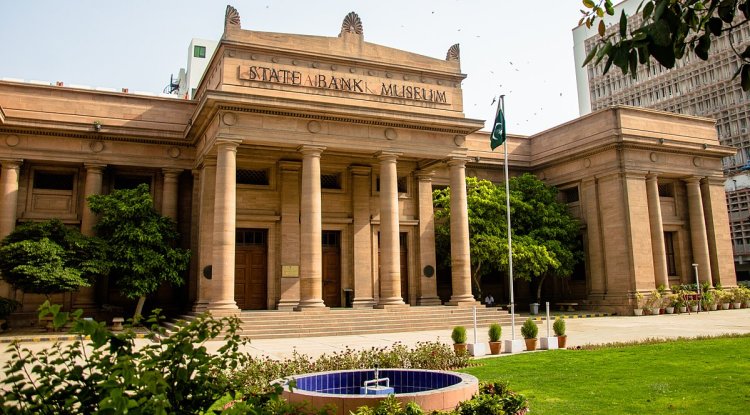SBP Leaves Policy Rate Unchanged At 22%
The State Bank of Pakistan (SBP) Monetary Policy Committee (MPC) met today and maintained the policy rate at 22%.

Most market participants supported the rate pause, therefore the conclusion was expected.
As expected, headline inflation rose in September 2023, the Committee noted.
However, it is expected to fall in October and continue to fall, especially in the second half of the fiscal year.
Recent volatility in global oil prices and the November 2023 gas tariff hike offer risks to the FY24 inflation and current account outlook, but the Committee also acknowledged mitigating factors.
Targeted fiscal consolidation in Q1, commodity market availability improvement, and interbank and open market exchange rate alignment.
Global oil prices are volatile, and the Middle East crisis makes its prognosis even more uncertain.
The MPC stressed maintaining restrictive monetary policy in light of these developments.
The MPC underlined that the actual policy rate is notably positive on a 12-month forward-looking basis and suitable to bring inflation down to 5-7% by end-FY25.
The MPC said this view depends on budgetary consolidation and timely external inflows.
Actual Sector
Recent economic activity data supports the MPC's moderate growth forecast for this year.
In example, key Kharif crop output projections have increased significantly from previous year.
Higher fertilizer off-take and water availability support these crop yield projections.
Cement, POL, and auto sales are also recovering moderately.
Domestic-oriented industries have contributed to large-scale manufacturing (LSM) output's modest improvement in the first two months of this year.
Outer Sector
The current account deficit narrowed by 58% YoY to $947 million in Jul-Sep FY24, practically leveling out in September 2023, according to the MPC.
September exports and worker remittances rose over the previous two months.
Early September exchange company changes and regulatory efforts aganist illicit market operations improved FX market sentiment and liquidity.
After weak official inflows in August and September, interbank market inflows stabilized the SBP's FX reserves at $7.5 billion on October 20.
However, the MPC emphasized that a successful and timely IMF-SBA review will unlock multilateral and bilateral financing.
Fiscal Sector
Q1-FY24 fiscal indicators improved from Q1-FY23. The fiscal deficit fell to 0.9% of GDP from 1% while the primary balance surplus rose to 0.4% from 0.2%.
This improvement is due to increased revenue and reduced expenses. Revenue increased 24.9% for FBR over the same period last year.
Due to a substantial rate-driven increase in PDL collection, non-tax revenues practically doubled.
Subsidies and grants were cut, keeping total expenditures at last year's level. The MPC stressed budgetary restraint and fiscal reduction to keep inflation low.
Credit and Money
Due to private sector credit slowdown and more than seasonal commodity operations financing retirement, broad money (M2) growth slowed to 12.9% at end-September from 14.2% in end-June 2023.
Since June, reserve money growth has decreased due to a considerable slowdown in currency circulation.
The MPC highlighted that since June, SBP and the banking system's Net Foreign Assets (NFA) rose due to large FX inflows in July, while Net Domestic Assets (NDA) declined, improving M2 and reserve money composition.
The proposed fiscal consolidation and predicted foreign inflows should increase private sector credit and banking system NFA.
Inflation Outlook
September headline inflation reached 31.4% YoY, as expected.
Due to lower gasoline costs, food commodity prices, and a favorable base impact, the MPC anticipates inflation to fall sharply in October.
The Committee also reiterated its prediction that inflation will fall significantly from the second half of FY24, barring major events.
The recent rise and volatility in global oil prices and the second-round consequences of a large gas tariff increase pose inflation risks.
Core inflation has been high at 21% for four months.
The Committee highlighted that fiscal policy is also stabilizing the economy, which, along with increased food commodity supply, may help the central bank lower inflation.


 khushboo_ghori
khushboo_ghori 





